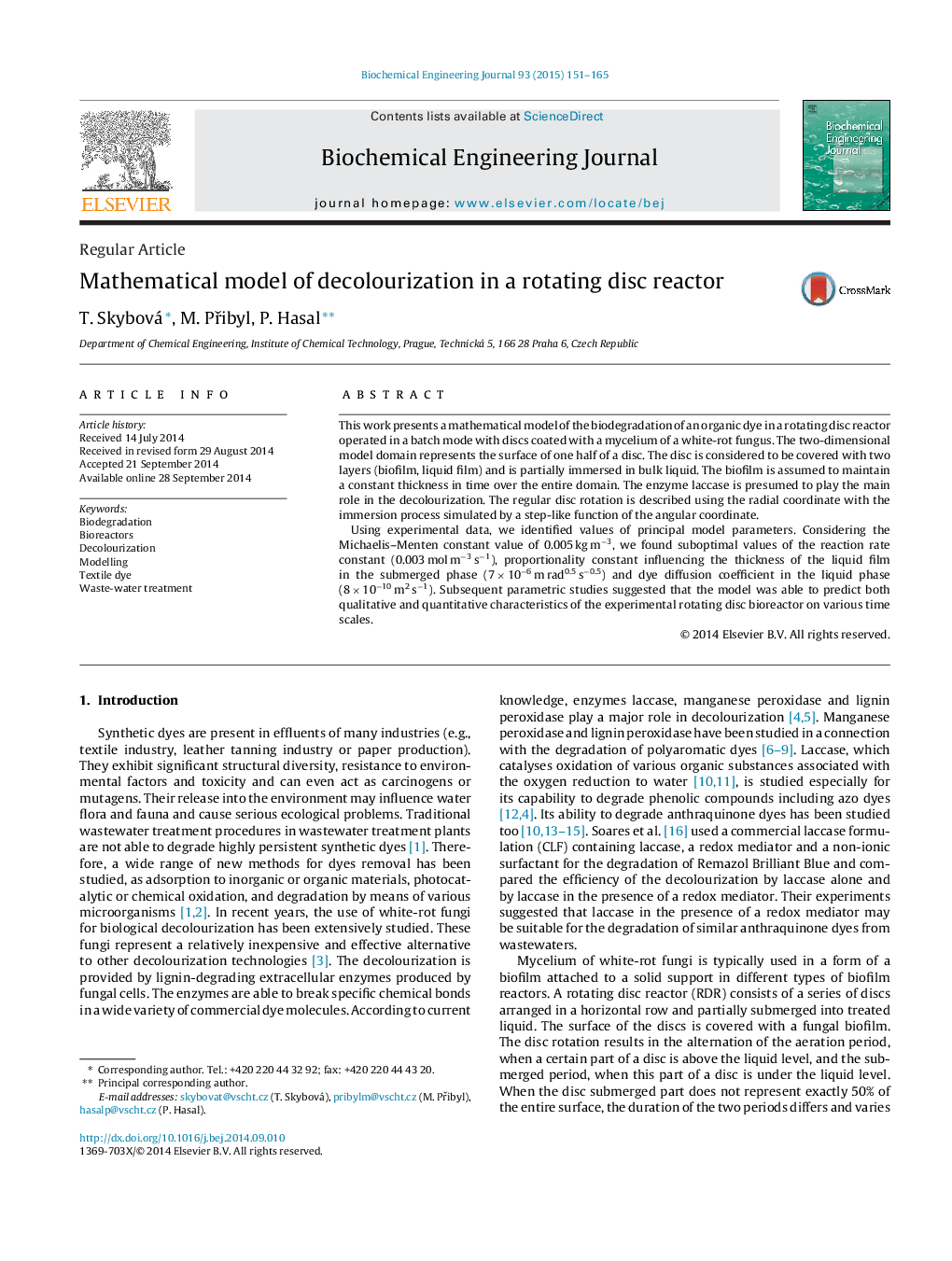| Article ID | Journal | Published Year | Pages | File Type |
|---|---|---|---|---|
| 3067 | Biochemical Engineering Journal | 2015 | 15 Pages |
•We developed a 2D mathematical model of biodegradation in a rotating disc reactor.•The model describes textile dyes degradation by a mycelium of a white-rot fungus.•The decolourization follows the multiplicative Michaelis–Menten kinetics.•Using experimental data, we found suboptimal values of the key model parameters.•Results are in agreement with the behaviour of a laboratory scale reactor.
This work presents a mathematical model of the biodegradation of an organic dye in a rotating disc reactor operated in a batch mode with discs coated with a mycelium of a white-rot fungus. The two-dimensional model domain represents the surface of one half of a disc. The disc is considered to be covered with two layers (biofilm, liquid film) and is partially immersed in bulk liquid. The biofilm is assumed to maintain a constant thickness in time over the entire domain. The enzyme laccase is presumed to play the main role in the decolourization. The regular disc rotation is described using the radial coordinate with the immersion process simulated by a step-like function of the angular coordinate.Using experimental data, we identified values of principal model parameters. Considering the Michaelis–Menten constant value of 0.005 kg m−3, we found suboptimal values of the reaction rate constant (0.003 mol m−3 s−1), proportionality constant influencing the thickness of the liquid film in the submerged phase (7 × 10−6 m rad0.5 s−0.5) and dye diffusion coefficient in the liquid phase (8 × 10−10 m2 s−1). Subsequent parametric studies suggested that the model was able to predict both qualitative and quantitative characteristics of the experimental rotating disc bioreactor on various time scales.
